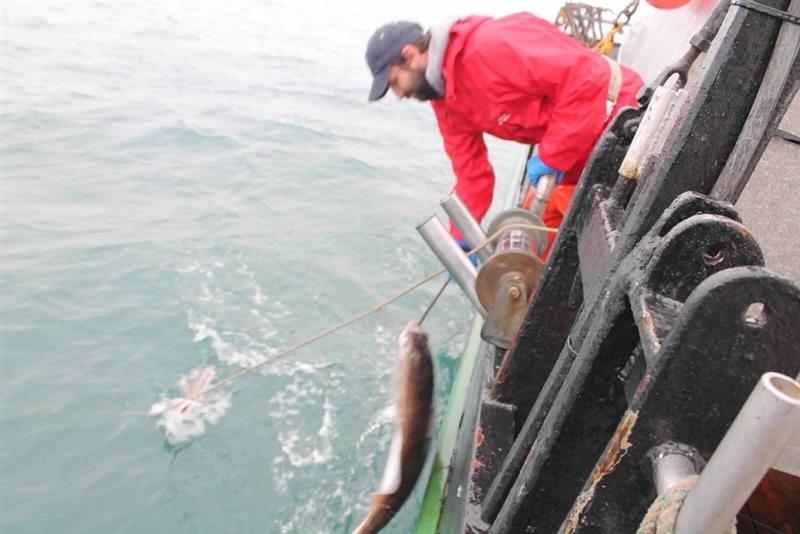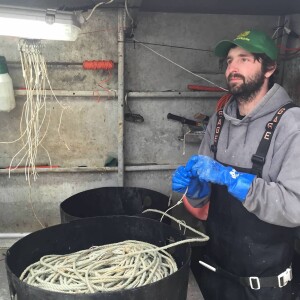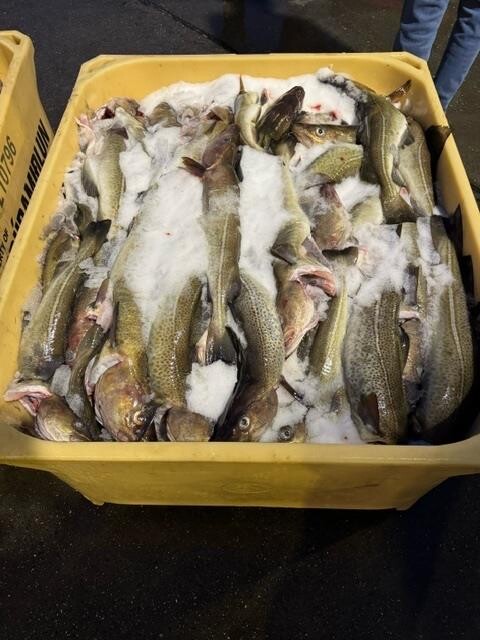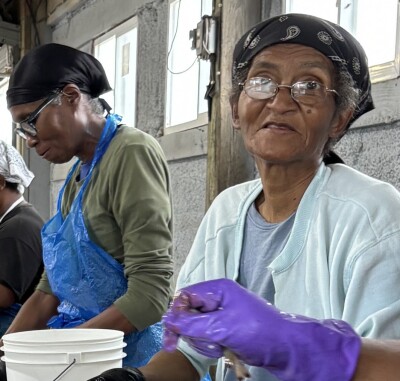Part Two of Erik’s story. To read the previous article, click here.
The long road to independence
In 2012, I partnered on a 58-foot fixed-gear vessel with my father and a high school friend, looking to tender in the summer and then target cod, halibut, and sablefish the rest of the year. I had a young family and wanted to stay closer to home, so I transitioned fully off the Baranof in 2015. The partnership lasted about three years, but we ultimately found that the aging vessel could only really support one family. I bought my father and friend out of the business and tried to keep the operation cash-positive.
It didn’t always work. We fished hard, almost year-round. Pacific cod was increasingly important for us and other fixed gear sectors, but I was continually disappointed by the quality, handling, and execution of our shoreside cod sector. Low quality leads to low prices, and you need massive volume to make it pencil out. Since I was never a huge cod producer our seasons fell short of adequate, especially considering how hard we worked. The crew and I always looked forward to the higher prices during halibut and sablefish seasons.

Some years later, after buying a newer and more capable 58-foot vessel, I was complaining to my old boss Chuck Hosmer about the shoreside price of cod in Alaska. He mentioned a recent trip to Iceland and how amazed he was by the cod he saw in Reykjavik’s processing plants. The vessels used an alternative chilling technology called slurry ice. The fish were handled delicately, placed in totes in the fish holds, and surrounded by a snow-like ice. The system was ubiquitous across the island, reflecting the quality standards demanded by the processors. The fish were never pitched or pumped. Instead, full totes were lifted off the vessel, then shipped abroad or moved directly into processing facilities.
I was intrigued. I wondered if Alaska would ever get to the point of doing something similar. I wondered if I could.
That fall, strolling the aisles of the Pacific Marine Expo in Seattle, I saw a booth for the company KAPP. They had pictures of slurry ice machines featuring the Icelandic process Chuck had described. Not long after, I met Larus Gudbjartsson from KAPP, and Mike Kilpatrick from the large tote manufacturer Saeplast. In them, I found partners in a new vision for Alaska seafood.
A glimpse into a modern fishery
In January of 2023, my friend Nick Garay and I headed to Iceland, touring seafood facilities with KAPP. Majority owner and CEO Freyr Friðrikson and Larus took us all over the island personally, introducing us to fish processing technology we didn’t even know existed. I was shocked that the head of a large company took the time and energy to show around a couple of small-time Alaskans. But we saw that side of Icelandic character and culture many times through that and following trips – no NDAs were signed, and no government relations inquiries were conducted. These guys were as straightforward as it gets, and a breath of fresh air after years immersed in the politics of Alaska seafood.
For days, we toured different processing plants and vessels of varied gear types, owned by many large and small entities. We were blown away by the parallel challenges between Alaska and Iceland – labor shortages, remote geography, marginal weather, etc. Over the past few decades, however, Iceland had seemingly cracked the code on quality and global market access. They addressed labor rights and workforce development, and the industry revolutionized their harvest and processing practices.
Icelanders seemed a generation or more ahead. This was a mainstream, scaled, quality effort, and it showed. Their dockside, wholesale, and retail prices were approximately four to seven times higher than what similar Alaskan products drew. After years of frustration, I was finally looking at a viable alternative.
As I touched back down in Alaska, the reality of our industry’s hurdles ran through my mind. Remote ports with no road systems, sporadic or no air service, lack of public dock space for unloading/loading, consolidated processing entities with many layers of management, fisheries management’s political issues, and the fact that our vessel would have to completely change how we operated if we were to adopt a different model.
How could I realistically use what I learned in Iceland within the entrenched, antiquated model of the Alaskan seafood industry? I emailed most major processors about collaborating on a quality project; however, small harvesting entities like Kaia Fisheries often don't have the clout to reach the decision-makers at large companies. Our emails remained in middle-management inboxes, eventually disappearing into the abyss. The few that did respond thought seafood model changes were a great idea, but impossible to implement in Alaska.
But at this point, the match was lit. I believed, and still do, that Alaska must start to prioritize quality and lessen our unwavering focus on volume. There’s a fine line between enough quantity to make a living, and so much quantity you sacrifice quality. And I was done focusing on volume alone.
For more than a year, my wife and I researched shipping logistics, processing options in Alaska and the lower 48, vessel conversion options, and captain and crew interest in trying something new. Even with a proven example thriving in Iceland, was there enough interest within our own business to change our behavior? If I couldn’t get interest from a single processor, how was I going to get this higher-quality fish to market? Were we crazy to try to take this on when no one else wanted to?
To read more of Erik’s story, follow the next article.







